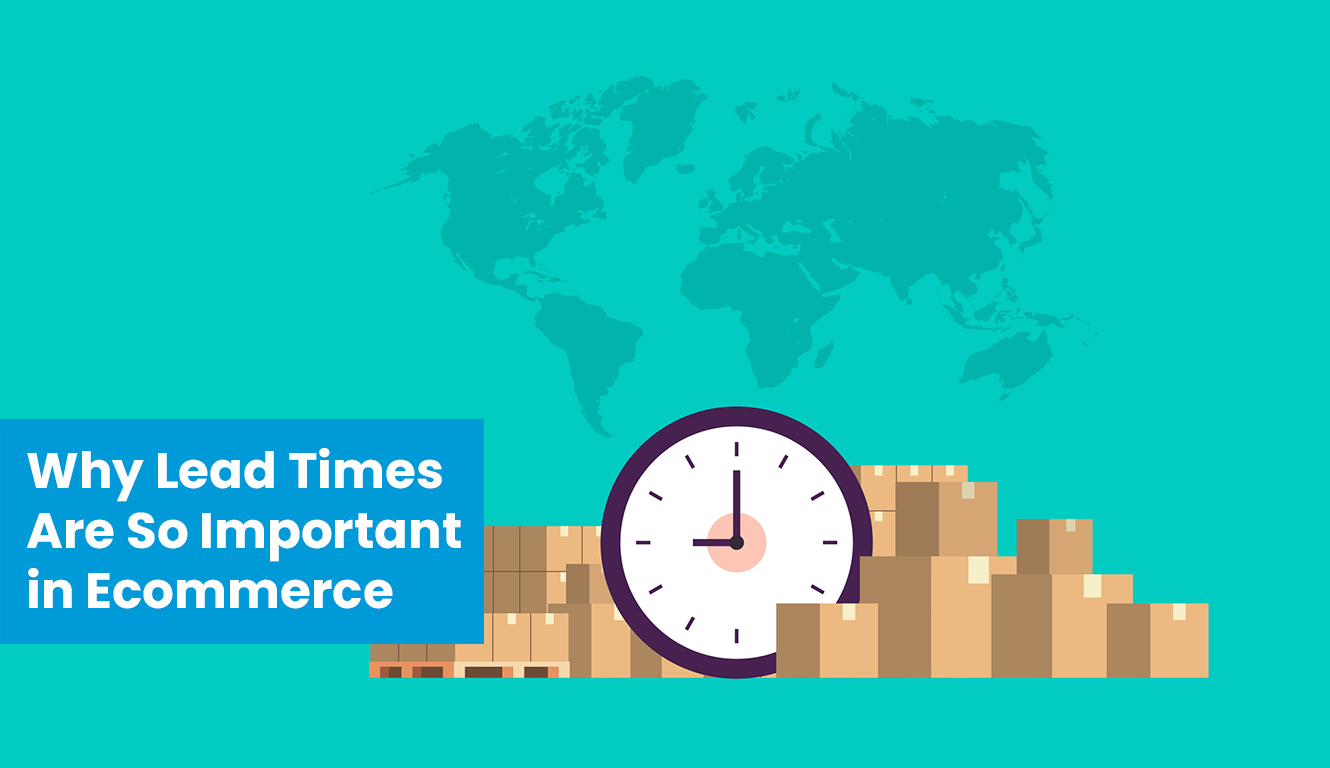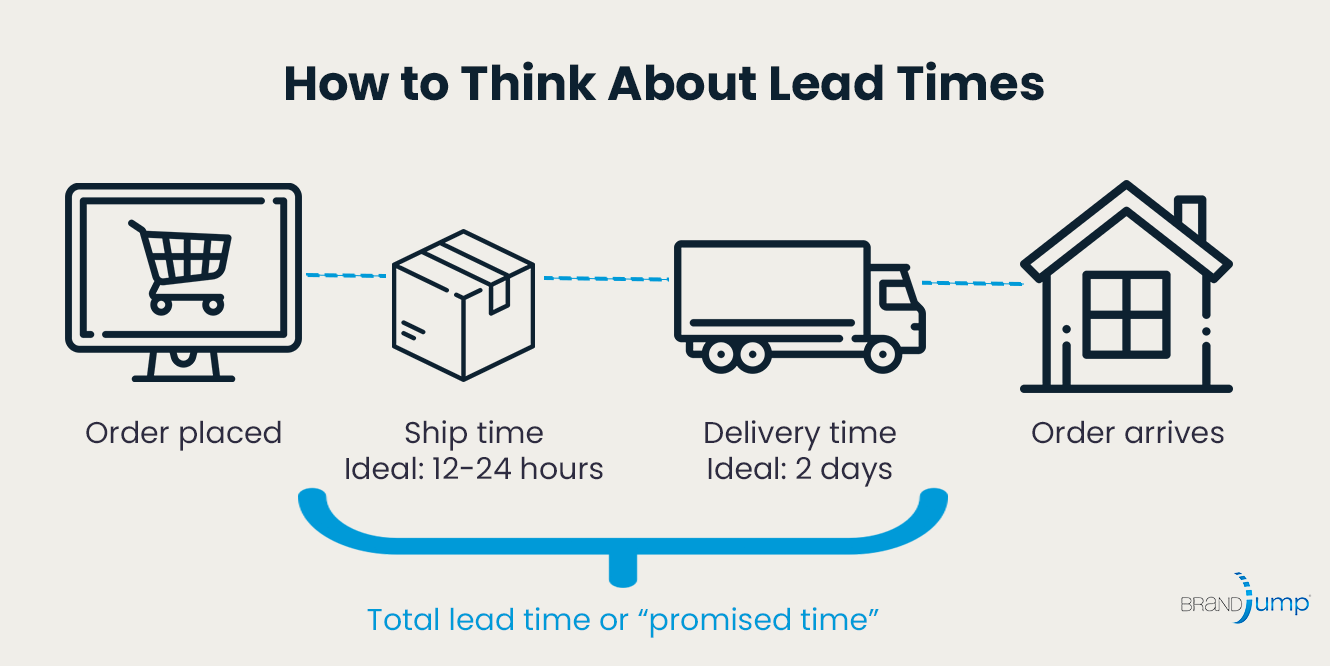
When we meet with our brand partners and the retailers they work with, there is almost always one topic that’s on the agenda, no matter what.
Lead times.
Retailers want them shorter, and brands are consistently working to get there. Lead times are one of the components of a retailer scorecard, making it worth discussing at any partnership checkpoint.
It’s not news that when it comes to lead times, the shorter the better. We all read the headlines about customer expectations and the ever-shrinking window of time a shopper is willing to wait to receive something they’ve ordered online. And that indeed plays a big part.
But there is a whole chain of additional factors that are impacted by lead times, making them a critical pillar of success for selling online. And like many of those pillars, short lead times have quickly moved from a nice-to-have to a must-have.
For example, just this month, Wayfair sent a note to its suppliers to inform them that the retailer’s lead time expectations were moving up by one day. Adhering to this isn’t a requirement, but brands who can meet that expectation can expect to see additional benefits from being able to do so.
Short lead times ultimately benefit the growth and success of your ecommerce business. Here, we’ll look at all the ways lead times impact your online business and what brands can consider to improve them.
Lead Time is "Promised Time"
First, let’s level-set on what we’re talking about when we say lead times.
Lead time, in total, is really a “promised time” which is made up of two things:
- “Ships in” time: The amount of time after an order is placed that it takes products to leave your warehouse
- “Delivered in” time: The average amount of time a product takes to get to any particular area of the country.

So which is more important?
The answer, of course, is both.
Fast Lead Times Play a Role Across Your Online Business
Shortening the lead times on your brand’s products can impact everything from sales volume to inventory levels to the strength of your retail partnerships. More specifically, it plays a role in:
Meeting the customer expectation: We all know that in the Prime age, buyers simply don’t want to wait. They’ve come to expect a fast turnaround as the norm—according to the Retail Industry Leaders Association, 90 percent of consumers see 2- to 3-day delivery as the baseline. In another survey, nearly half (48 percent) of shoppers worldwide cited speed as an aspect they would change about the delivery of purchases online. In addition, 42 percent said they would like to reduce the cost of delivery, and 41.6 percent stated they wished for more clarity on the exact delivery time.
So having a short lead time is as simple as: it’s what the customer requires.
Creating the customer experience: Related to satisfaction, providing a stellar customer experience reflects more on the retailer, not the manufacturer. To be a solid partner, manufacturers must be able to support the experience that a retailer is trying to create, i.e. one with a quick and smooth delivery. The customer experience is incredibly important to the retailer, helping them stay competitive and build a loyal customer base.
Influencing the algorithm: Short lead times mean meeting the customer and retailer expectation, and that’s something retailers want on repeat. By being able to deliver a competitive lead time, your products have a better chance of being favored in algorithm-driven sort rankings and gaining more exposure to the shopper.
Inclusion in sorting: If a retailer has a filter or sort option based on lead time, a short one will help ensure your products don’t get excluded or filtered out for the customer who is looking to receive something in a quick timeline. On some sites, this is the most commonly used filter.
Staying competitive: The more commoditized a product is, the faster a lead time should be. Why? If the style and price are roughly the same, lead time is a way to compete. If there isn’t an obvious difference between the products, the customer will choose the one they can receive more quickly.

Lead times have prominent placement on most retailers' product pages.
Boosting brand perception: Because they are a major part of meeting customer satisfaction, short lead times reflect well on your brand, both with the consumer and your retail partner. It’s an ingredient in the ecommerce recipe for success, and prioritizing this shows both that you are a brand to look to first. That will only serve to strengthen partnerships with your key retailers.
Not prioritizing lead time isn’t just taking a risk of not satisfying the customer, but individual parts of your ecommerce program that add up to make a successful channel.
Considerations for Reducing Lead Times
Even if it’s the end goal, getting to a shorter lead time doesn’t happen overnight. But there are steps brands can take to move toward an optimal lead time.
First, make sure you can ship quick. Your brand should have the operational efficiencies in place to ship items within 12-24 hours. If your warehouses are strategically placed, that will allow most regions to deliver items in 2 days.
Then, understand the big picture of your online business. What are the areas you’re shipping to the most? How quickly are items getting to your closest region? Or the furthest out? Seeing the logistical landscape will help you navigate what’s needed to achieve a short delivery time across the map.
Brands could also consider adding an additional warehouse or 3PL solution to fill delivery gaps in any high-volume areas. That can be done by sourcing your own warehouse, or through a retailer’s program like Wayfair’s CastleGate or Amazon’s FBA.
Lastly, check your product messaging. If quick shipping is your norm, make sure your retailers are aware of this and are highlighting it wherever possible, not just in the fine print on the product page. Is there a badge or callout they can add to pages to communicate that to the customer? It’s also a good idea to audit your best sellers to make sure that products that should have that messaging, do.
By reducing the time it takes for products to travel from the warehouse to the hands of awaiting customers, manufacturers can unlock benefits that go beyond mere convenience. Those who prioritize shortening lead times are poised to elevate their brand reputation, get exposure to more customers and remain resilient in an industry that thrives on innovation and speed.





